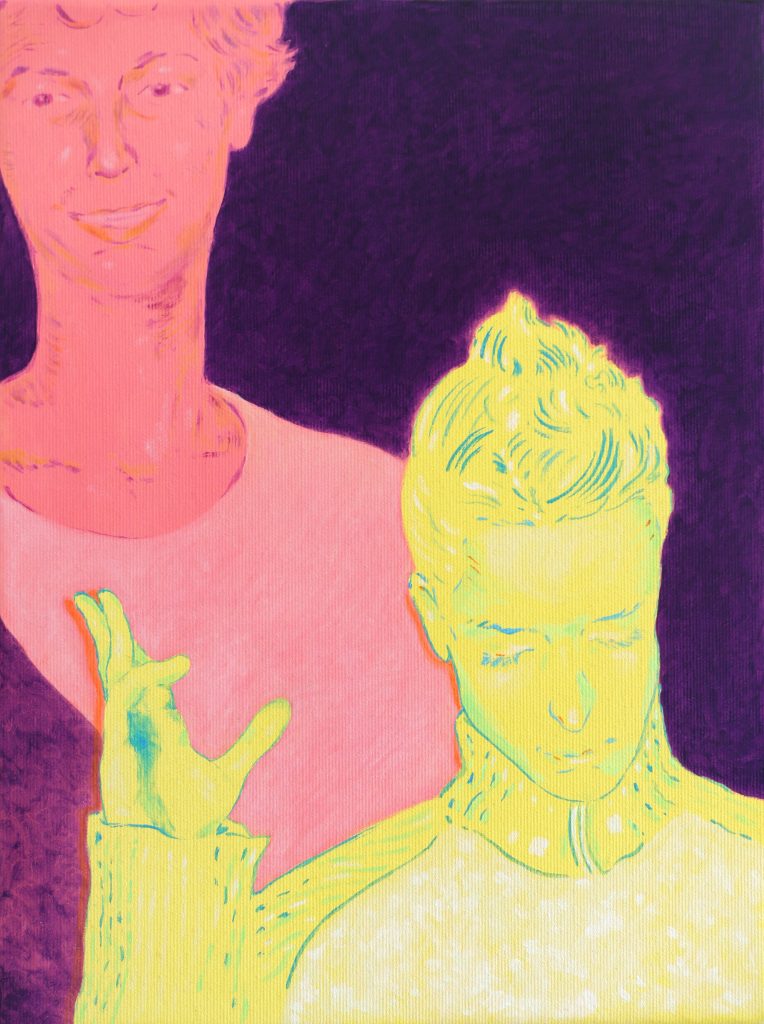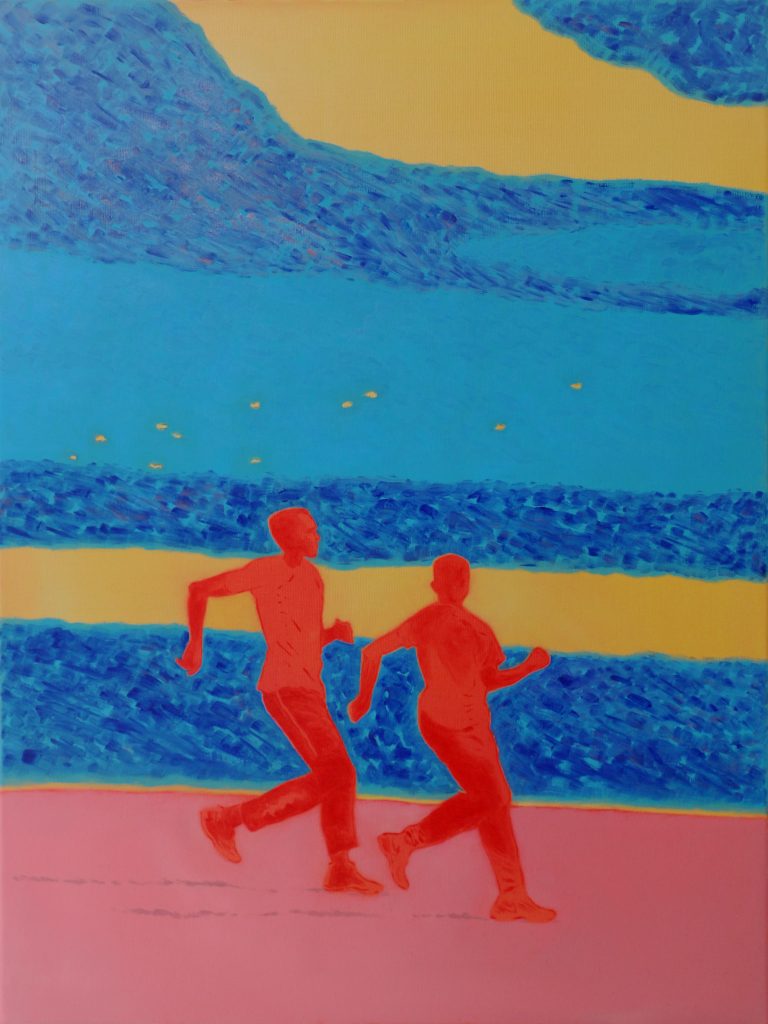Xarli Zurell paints his environment, the parks he crosses and shares with strangers.
The Basque painter was trained at the Biarritz and Nantes schools of fine arts, and is a fine illustrator and an experimented colorist. His chromatic freedom is similar to that of the Nabi group, particularly Paul Sérusier (1864-1927) who, following his master Paul Gaugin’s (1848-1903) advice, had represented his vision of reality following his instinct : “How do you perceive this tree? Yellow, well then use yellow, the most beautiful yellow in your palette”. The vibrant tonalities used by Xarli Zurell completes his mastery of spaces and his capacity of isolating a figure. His subjects are painted in exalted colors and are almost enclosed in a halo. These simple and anecdotic human figures become spectacular as they appear detached from flat surfaces.
Xarli Zurell’s work is based on photographs he captures in parks. To him, these places are human-made projections of nature and thus necessarily fake. The artist reframes his shots, focusing on the subjects that arouse his interest. However, in doing so, he dedicates a lot of importance to the hors-champ. The out-of-frame elements are imagined regardless of their absence. In that sense, his work on the hors-champ can recall that of french painter Gustave Caillebotte (1848-1894), that had developed the hors-champ practice by suggesting a reality only visible to the painting’s figures, and not to its spectator. From then on, Xarli Zurell explains that this hors-champ allows for the projection of the spectator, who can thus identify more easily with the scene.
The artist paints vagabond subjects that appear detached from grassy lawns. These wandering silhouettes seem gripped by “saudade”, that emotional state which ressembles the baudelarian spleen, to which it adds a dreamy, melancholic yet imprecise happiness. While these paintings, filled with a certain feeling of solitude, fit into the heritage of Edward Hopper’s (1882-1967) characters, Xarli Zurell’s complex composition and saturated colors suggest a positive and joyful alternative reality. The artist comes close to opposing the Oscar Wilde (1854-1900) quote in which he claimed that “behind every exquisite thing that exists hides something tragic”.
Baptiste Léger









